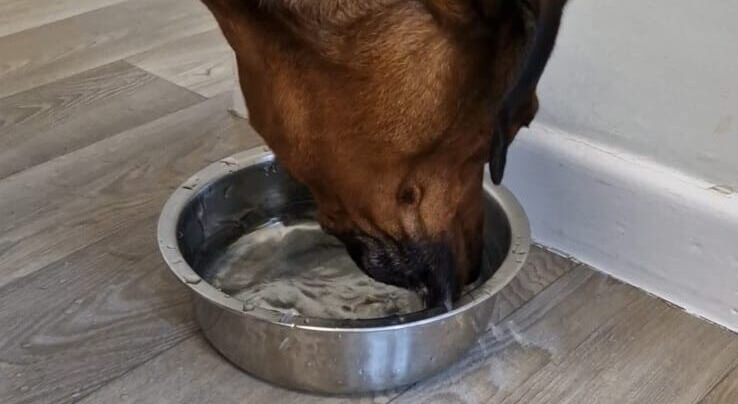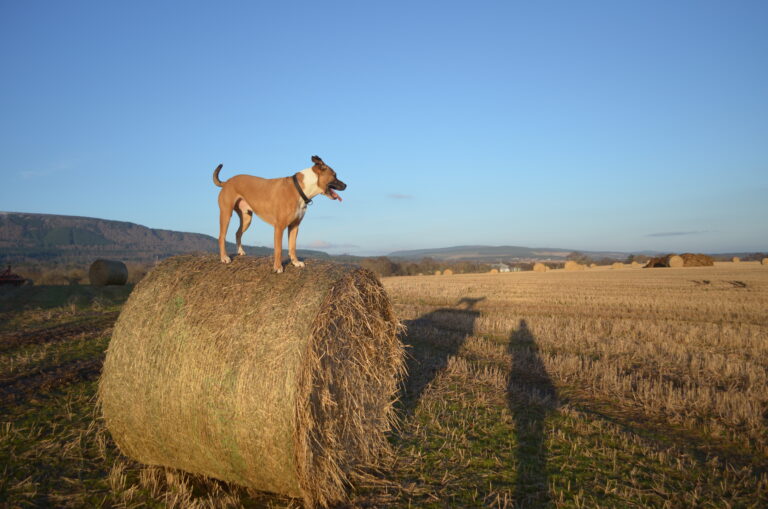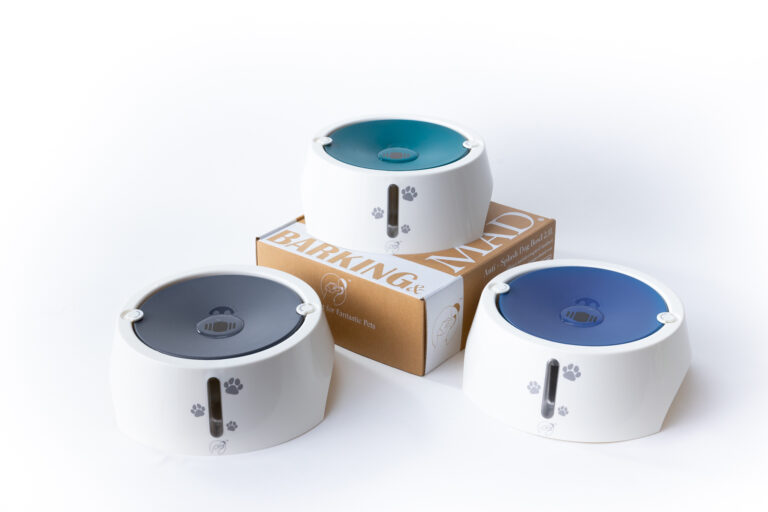Socializing a nervous dog is like helping a shy child through their first day of school. It’s tough, with small wins and occasional setbacks. But the payoff is huge. A well socialized dog is not only more confident but happier, healthier and easier to manage in all situations.
In this post we’ll be looking at how to socialize a nervous dog, practical steps, understanding your dog’s needs and positive reinforcement techniques. Whether you have a rescue dog, an adult dog that missed out on early socialization or a dog with troubled past experiences, this guide is here to help you every step of the way.
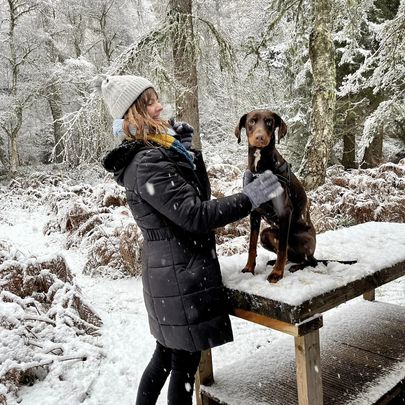
The Benefits of Proper Socialization
The process of proper socialisation can be very time consuming and hard but it is extremely important. Because of this, it’s important to come back to your why. Why do we want a dog with good behavior? This will help you get through the tough times and get you and your new pet back on track. Socializing your dog has many benefits that will impact both their life and yours.
Understanding Potential Triggers: The Roots of Anxiety
Before we get into the strategies for socialising your dog we need to understand why your dog is anxious. Many rescue dogs come with a history of neglect, abuse or simply no good experiences. These past experiences can lead to many behavioural issues including fear of other dogs, people or new environments.
Your adult dogs nervous behaviour may be due to negative associations from their past. For example, if a dog was attacked by another dog in their previous life they may develop a fear of all other dogs. Understanding your dog’s history even if it’s a blank slate is important to tailor the socialisation process to their needs.
Past Experiences May Trigger Nervous Behaviour
Your adult dogs nervous behaviour may be due to negative associations from their past. For example, if a dog was attacked by another dog in their previous life they may develop a fear of all other dogs. Understanding your dog’s history even if it’s a blank slate is important to tailor the socialisation process to their needs.
Setting Expectations with Adult Dogs
When it comes to socialising your shelter dog you need to set realistic expectations. You may dream of having a “unicorn dog” the kind that’s friendly with everyone, relaxed in any environment and unbothered by anything. Like humans however, every dog is unique and even the most calm dogs have limits.
Understanding Your Dog’s Limits:
The goal of socialisation isn’t to turn your dog into a social butterfly who loves everyone and everything. It’s to help your dog feel comfortable and safe in the situations they’ll encounter in their life. This might mean being calm at the vet, relaxed on a short walk or coping with loud noises like fireworks.
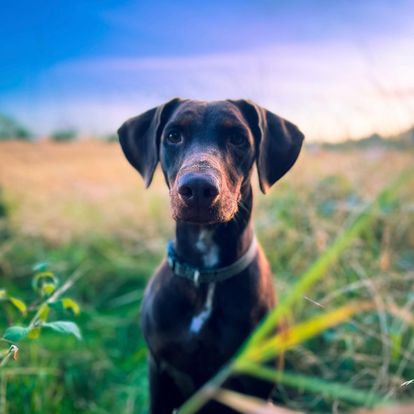
What Realistic Success Looks Like:
Playdates Over Dog Parks: Instead of expecting your dog to enjoy dog parks, focus on helping them feel comfortable with one or two well matched dog friends. Playdates with those friends can be a more positive experience for your dog.
Stress free Vet Visits: Aim for cooperative care behaviours where your dog is comfortable enough to let the vet examine them without too much stress. This may not mean they love the vet but they can handle the experience without needing to be restrained or anxious.
Calm Walks, Not Close-Ups: On walks instead of expecting your dog to greet every person or dog calmly focus on them being relaxed and focused on you. It’s okay if they don’t want to interact with others as long as they can stay calm.
Calm Dogs During Loud Noises: During events like fireworks or thunderstorms the goal might be for your dog to stay close and comforted by you rather than panicking or trying to escape. If they can snuggle with you and feel safe that’s a big achievement.
Celebrating Success (Even The Small Steps)
Setting these realistic expectations avoids frustration and means don’t put too much pressure on your dog or yourself. Your dog may not become a social butterfly, but if they can navigate the world in a way that keeps them happy and functional that’s a big win. Every small step towards comfort and confidence is progress to celebrate.
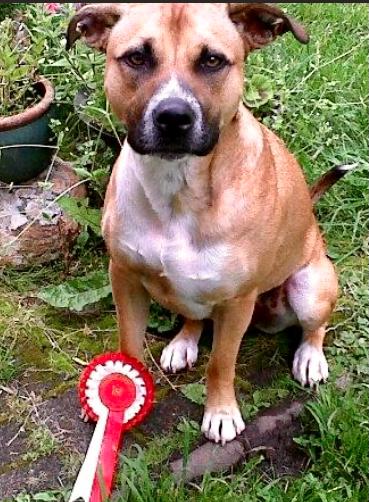
Your Dog’s Threshold – Signs and What To Do
When socialising a nervous dog it’s important to be aware of their “threshold”. This means the point at which a dog becomes too overwhelmed to learn or respond positively to a situation. Knowing when your dog is “over the threshold” is key to making socialisation positive and effective.
Signs Your Dog Is Over the Threshold:
If your dog can’t settle, is pacing or moving around constantly it’s a sign they’re feeling overwhelmed.
Dogs pant when they’re hot or after exercise but if your dog is panting heavily in a calm situation they might be over the threshold.
Whining, barking or growling can indicate your dog is uncomfortable and can’t cope with the situation.
A tail tucked between the legs or held stiffly is a sign of stress. Watch how your dog carries their tail in different situations
When a dog’s ears are pinned back against their head it’s a clear sign they’re feeling threatened or overwhelmed.
While these behaviours can be normal if they’re excessive or in a stressful situation they indicate discomfort.
Turning away, trying to hide or pulling on the leash to get away are signs your dog is trying to avoid the situation.
If your dog suddenly stops moving or becomes very still they might be too scared or overwhelmed to continue.
What to Do When Your Dog Is Over the Threshold:
If your dog behaves as if they over their threshold it is your responsibility to act fast and remove your dog from the situation or reduce the trigger. Your dog deserves a stress free experience, and this may mean moving further away from another dog, leaving the dog park or just giving your dog a break in a quiet space.
The Aim
The aim is to keep your dog below their threshold where they can remain calm and receptive to positive reinforcement. This prevents negative associations and means your dog feels safe and supported throughout the socialisation process.
Getting Started: Socializing Rescue Dogs
The first step in socialising a nervous dog is to set the stage and create a safe and controlled environment where the dog feels safe. This means starting at home where the dog is most comfortable before gradually introducing them to new environments and stimuli. Here are some key points to consider:
Start Slow and Be Patient: Don’t rush the socialisation process it can backfire and increase anxiety and fear. Start with baby steps—short, positive experiences that gradually increase in intensity and duration.
High-Value Treats/Rewards: Positive reinforcement techniques such as rewarding your dog with high value treats can create positive associations with new experiences. Make sure to use treats your dog loves so they become a powerful tool in your training sessions. For some dogs, especially those that are overexcited toys and play may be of higher value than food so it’s important to know what your dog really loves and use that to your advantage!
Leash Training: Leash training is key to controlling your dog in new environments. A well behaved dog on a leash can be gradually introduced to other dogs and new situations without overwhelming them.
Know Your Dog’s Comfort Level: Every dog is different. Some dogs may be ready to go to a dog park after a few weeks of training while others may need months of gradual introductions before they’re comfortable around other dogs. Keep Sessions Short: Socialisation sessions should be short and sweet. It’s better to have a few good 10 minute sessions than one long stressful one.
Create a Routine: Dogs love routine. Having a consistent routine helps your dog know what to expect and reduces their anxiety in new situations.
Building a Strong Bond and The Importance of Trust
Building trust is a crucial aspect of dog socialization. The more your dog trusts you the more they will be willing to face new experiences. Here’s how to strengthen your bond:
Spend Quality Time Together: Spend time with your dog regularly whether it’s through play, walks or just sitting together. This builds a strong emotional connection.
Be Consistent: Dogs love routine and consistency. Stick to a regular schedule for feeding, walks and training sessions.
Gentle, Positive Training: Avoid punishment or force as this can damage the trust between you and your dog. Instead focus on positive reinforcement.
Respect Your Dog’s Pace: Let your dog progress at their own pace. Pushing them too hard can set them back and erode the trust you’ve built.
Your Dog Is Your Mirror
Remember dogs are super intuitive and can pick up on their owner’s emotions. When you’re feeling anxious or stressed your dog can sense it through your body language, tone of voice and even subtle changes in your behaviour.
During socialisation if you’re nervous your dog may mirror that anxiety and make it harder for them to feel relaxed and confident. Staying calm and composed can help reassure your dog and make the experience more positive for them as they navigate new social situations.
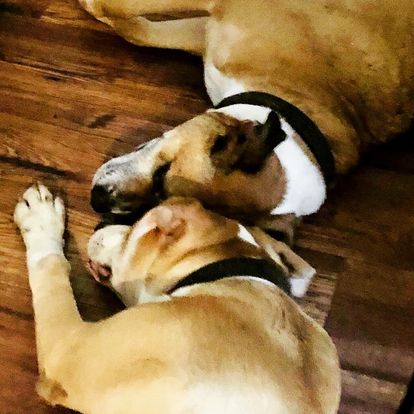
Dizzy’s Story With Other Dogs
If you’ve read any of our other blogs you’ll know about our rescue dog Dizzy and his battle with fearfulness. When we first got Dizzy he was terrified of everything—loud noises, other dogs, even the doorbell would send him into a panic. We were determined to help Dizzy but we soon realised it would take a lot of extra time to get him settled.
We started with basic commands at home, rewarding Dizzy for staying calm when the doorbell rang. Then we gradually introduced him to new environments always keeping the sessions short and positive.
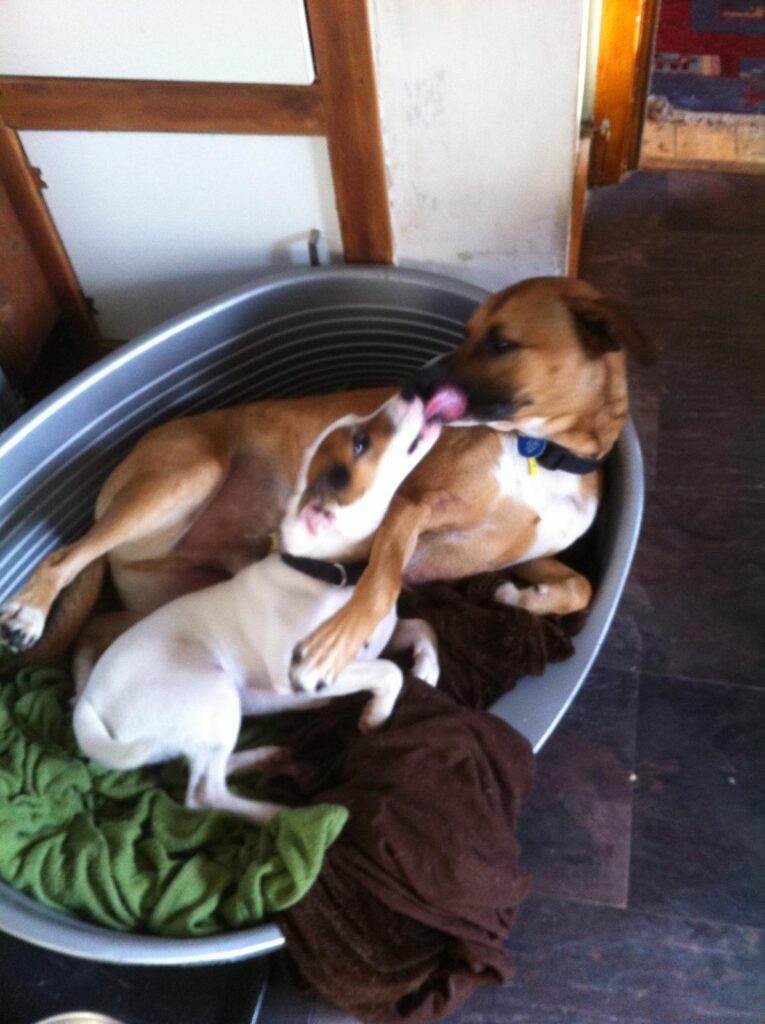
It took time but progress was made. We introduced Dizzy to other dogs in the park and at home. Dizzy approached other dogs, tail wagging cautiously. It was a small win but the start of Dizzy’s transformation. Over the next few months Dizzy became more confident and eventually a social butterfly. When we adopted Cooper, he was well equipped to deal with the excitement of a new puppy.
Dizzys’ story demonstrates the importance of patience, positive reinforcement and professional guidance in socialising a nervous dog. Read the story below.
The Power of Play During Socialisation
Play is actually an extremely important tool for socialising your dog. It provides mental and physical stimulation and helps your dog develop social skills. I know when we first adopted Dizzy, he hadn’t really had a ‘puppy hood’ so didn’t really know how to play properly. Many shelter dogs may be similar to Dizzy so start slow.
Use Toys to Build Confidence: Toys can help build confidence in nervous dogs. For example teaching your dog to fetch a toy and bring it back can help them feel more in control and less anxious.
Interactive Play with Other Dogs: Once your dog is comfortable with other dogs encourage them to play interactively. This can be fetch, tug-of-war or just chasing each other around the yard.
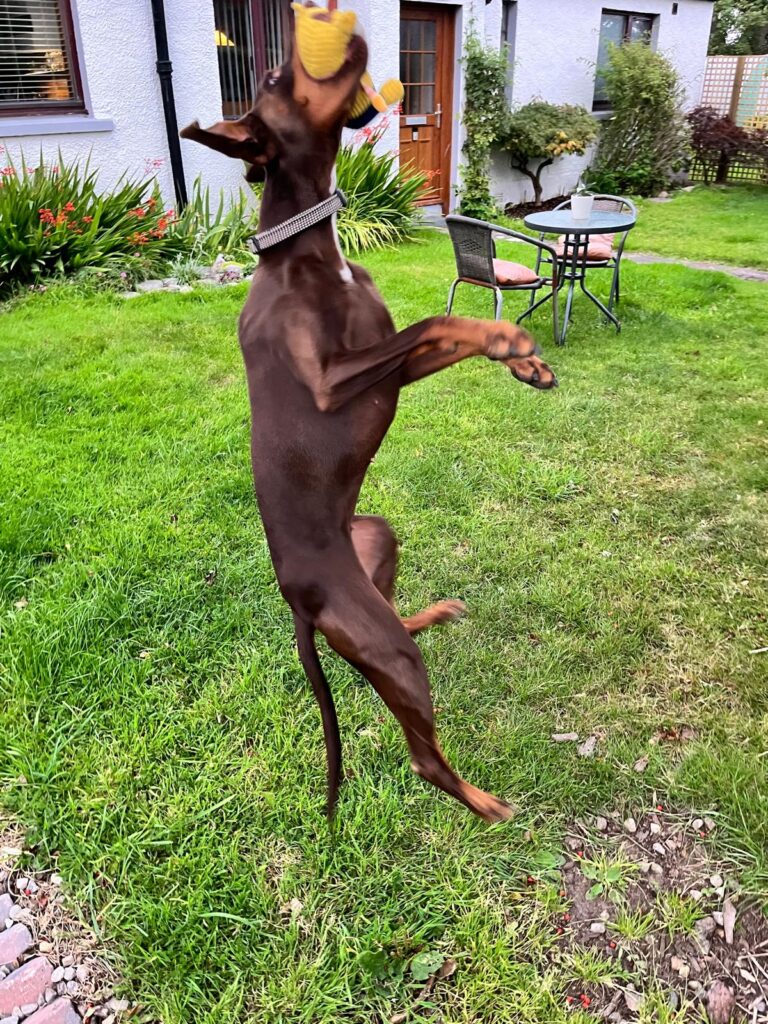
The Power of Positive Reinforcement
The key to socialisation is gradual exposure and positive reinforcement. Here’s how to implement positive reinforcement into your daily training.
Start with Familiar People and Dogs: Begin by introducing your dog to people and dogs they already know. This builds confidence before introducing new faces.
Introduce New Experiences Slowly: Gradually introduce your dog to new environments, people and dogs. One new experience at a time to avoid overwhelming them.
Use Positive Reinforcement Techniques: Whenever your dog is calm or curious instead of fearful reward them with treats, praise or playtime. This reinforces good behaviour.
Monitor Your Dog’s Comfort Level: Always watch your dog’s body language. If they show signs of stress take a step back and give them time to adjust.
Incremental Progress: Progress may be slow but celebrate small wins. Even a brief moment of calm in a new situation is a step in the right direction.
Doggie Daycare and The Dog Park
Once your dog is comfortable in controlled environments it may be time to introduce them to doggie daycare or a dog park. But these environments can be overwhelming so proceed with caution. Some dogs will never be ready for a situation like a dog park, as there are too many dogs.
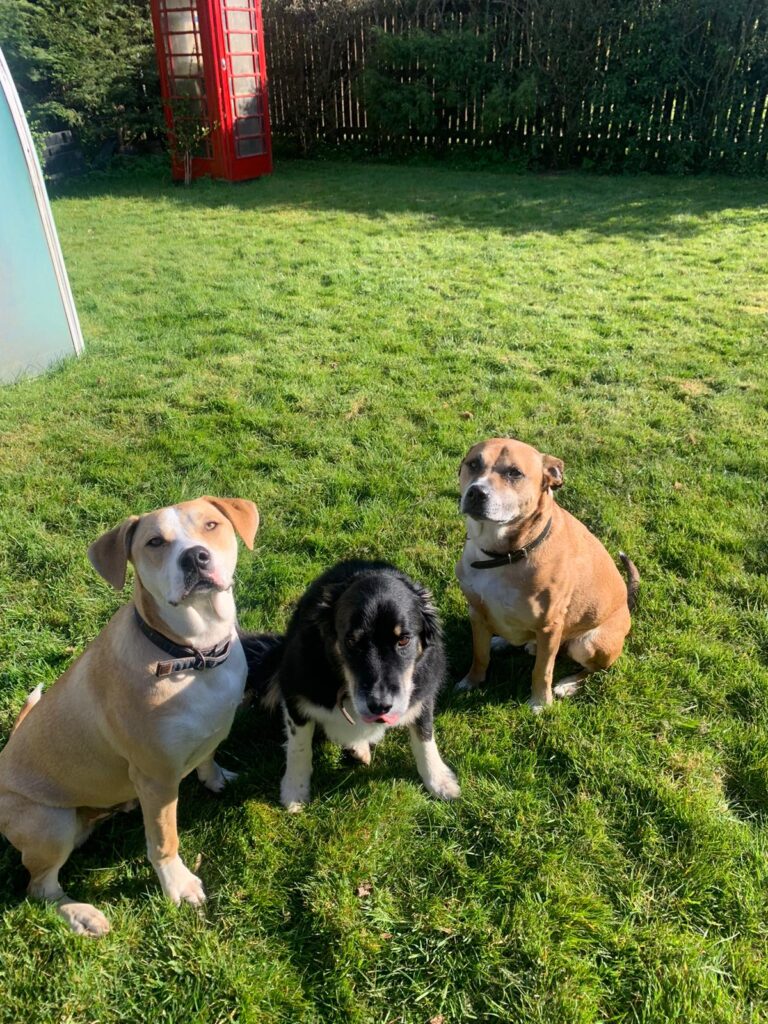
Start with a Short Visit: If it’s your dog’s first time keep the visit short – 10-15 minutes. Gradually increase the time as your dog becomes more comfortable. Choose a day care with staff that are experienced with nervous dogs and can provide a calm environment.
Choose the Right Time: Dog parks offer socialisation with other dogs but can be chaotic. Start with short visits during off-peak hours when the park is less busy. This reduces the chance of your dog feeling overwhelmed by too many dogs.
Watch for Stress: Watch your dog’s body language. If they’re over the threshold it’s time to leave and try again another day.
Stay Calm and Positive: Your dog will mirror your energy. If you’re calm and positive your dog will be too.
Positive Experiences: Make sure your dog’s experiences in these environments are positive. Avoid situations that could create negative associations, such as interactions with aggressive dogs.
Use Positive Reinforcement: Reward your dog for good behaviour at the dog park, whether it’s playing nicely with another dog or just being calm in a new environment.
Common Issues and Solutions
Socialising a nervous dog isn’t without it’s challenges and I speak from experience! Here are some common problems you may encounter.
Overcoming Setbacks: What to Do When Things Go Wrong
Even with planning things can go wrong. Here’s what to do:
Stay Calm: If your dog has a negative experience, such as a confrontation with another dog, stay calm and remove them from the situation. Give your dog time to decompress before you try socialisation again.
Go Back to Basics: If your dog is struggling with socialisation it may be helpful to go back to basic commands like “sit” and “stay”. These commands will help reinforce good behaviour and give your dog a sense of security.
Take a Step Back: If progress stalls don’t be afraid to take a step back to a more comfortable environment. It’s better to go at your dog’s pace than to rush the process.
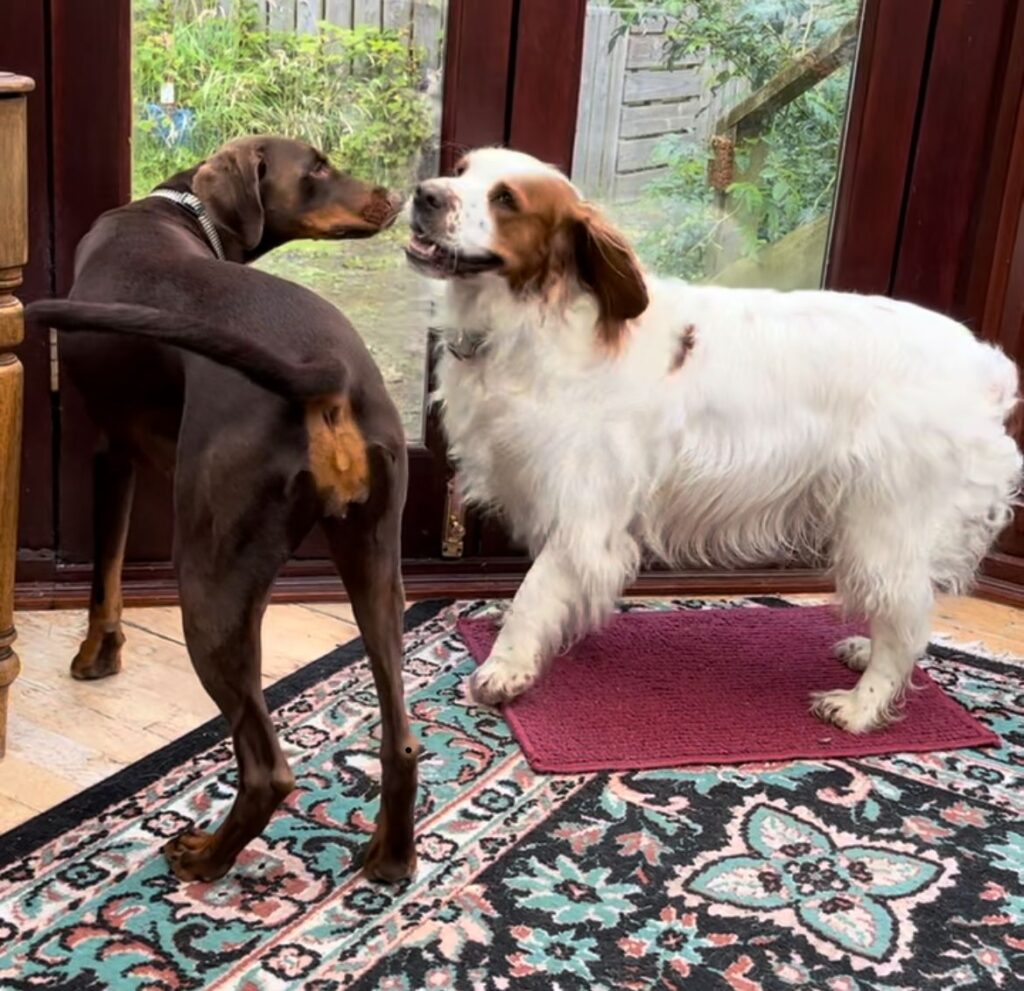
The Role of a Certified Professional Dog Trainer And When to Get Help
Sometimes despite your best efforts your dog’s anxiety may be too much for you to handle on your own. This is where a certified professional dog trainer can make a big difference. A trainer can:
Diagnose Your Dog’s Behaviour: A professional dog trainer can identify the underlying causes of your dog’s anxiety and create a customised socialisation plan.
Advanced Training Techniques: If your dog is showing aggressive behaviour or extreme fear a trainer can introduce advanced management techniques to help your dog cope.
Support in High Stress Situations: A trainer can support you during particularly tough socialisation sessions so you and your dog stay calm and positive.
Not All Dog Trainers Are Created Equal
Not all dog trainers are created equal and neither are their methods. Even with well socialised dogs, dominance or correction based techniques are not ideal. But when working with dogs who are under socialised or have had limited positive experiences these methods can be very harmful.
For dogs who need to feel more comfortable in the world using force, dominance or any method that causes pain or increases anxiety can backfire and make the situation worse.
Behavioural Science
Choose a trainer who uses methods based on behavioural science often referred to as “reward based”, “positive reinforcement (R+)” or “force free” training.
This will not only give you a happier, healthier relationship with your dog but also make training a positive experience for your pet.
Medication with Unsocialised Dogs
For dogs who are highly stressed, anxious or fearful it can be hard for them to relax enough to learn new behaviours or adapt to new situations. In some cases their anxiety is so overwhelming they are always on edge and can’t get to a calm state where learning can occur.
In these situations the appropriate use of anti-anxiety medication, supplements or other calming aids can make a big difference. These tools can bring the dog’s stress levels down so they can start to learn and form positive healthy associations with their environment.
Still Have Questions? The FAQ
What’s the best way to socialise a rescue dog?
– The best way to socialise a rescue dog is through gradual exposure to new experiences, positive reinforcement and if needed the guidance of a certified professional dog trainer.
Can it be too late to socialise a dog?
– It’s never too late to socialise a dog. But it may take longer with an older dog or one with a troubled past compared to a puppy.
How do you socialise an aggressive rescue dog?
– Socialising an aggressive rescue dog should be done with a professional trainer using techniques like counter conditioning and desensitisation.
How do you socialise an abused rescue dog?
– Socialising an abused rescue dog is about building trust through consistent positive experiences and avoiding situations that may trigger fear or aggression.
How long does it take for a rescue dog to get used to you and other dogs?
– It can take anywhere from a few weeks to several months for a rescue dog to fully get used to their new owner and new environment. The time it takes for a dog to get used to other dogs varies but with consistent positive interactions most dogs can adapt over time
How do I make a dog friendly with other dogs?
– Encourage positive interactions with other dogs, use treats and praise to reward good behaviour and avoid negative experiences.
What is the 3-3-3 rule for rescue dogs?
– The 3-3-3 rule is the typical stages a rescue dog goes through: 3 days to decompress, 3 weeks to settle in and 3 months to fully adjust to their new home.
What not to do with a rescue dog?
– Don’t force a rescue dog into situations they’re not ready for and never use punishment based training.
What is the best way to train a rescue dog?
– The best way to train a rescue dog is through positive reinforcement, patience and consistency, with the help of a professional trainer if needed.
How long does it take a dog to settle after being adopted?
– It can take several weeks to several months for a dog to fully settle into a new home after being adopted.
How to train a dog I just adopted?
– Start with basic commands, establish a routine and use positive reinforcement to train a dog you’ve just adopted.
How can I get my rescue dog to play?
– Use toys, gentle play and encourage interaction with other dogs to help your rescue dog learn to play.
Why won’t my rescue dog play?
– A rescue dog may not play due to past trauma, fear or simply not knowing how to play. Patience and gentle encouragement will help.
How do I teach a neglected dog to play?
– Introduce toys gradually, play in short positive sessions and be patient as your dog learns to enjoy playtime.
How do I socialise an anxious dog who is scared?
– Socialise an anxious dog by starting in low stress environments, use positive reinforcement and gradually introduce new experiences.
Can you train social anxiety out of a dog?
– While you can’t completely “train out” social anxiety you can reduce it significantly through gradual exposure and positive reinforcement.
What does it mean if a dog is dog selective?
– A dog selective dog gets on with some dogs but not others. Socialisation and careful introductions are key. Introduce dog selective dogs gradually, in a neutral environment and always supervise their interactions.
How to socialise a dog that doesn’t like other dogs?
– Gradually introduce them to calm friendly dogs in controlled situations, using positive reinforcement to build positive associations..
What happens if a dog isn’t socialised?
– A dog that isn’t socialised may develop behavioural issues such as fear, aggression and anxiety and will struggle to navigate everyday life.
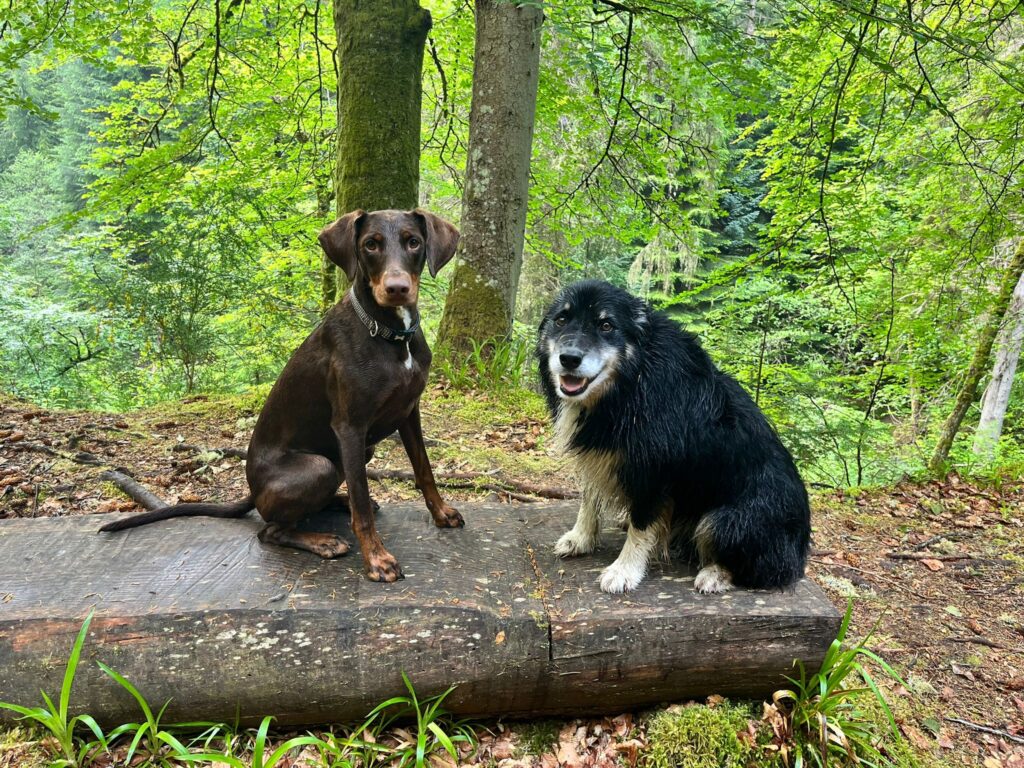
The Path To A Social Butterfly
Socialising a nervous dog is a bumpy road but the rewards are worth it. By understanding your dog’s needs, recognising their threshold and using positive reinforcement you can help your dog become a confident happy companion with the social skills they need to feel content. Avoid common mistake such as moving too fast for your dog, gradually increase other dogs during socialisation and you will do just fine.
Whether you have a rescue adult or puppy, a dog that missed out on early socialisation or a dog with a troubled past remember patience, consistency and love are your best tools. The bond you create through this process will not only change your dog’s life but yours too in ways you never thought possible.
Good luck!

